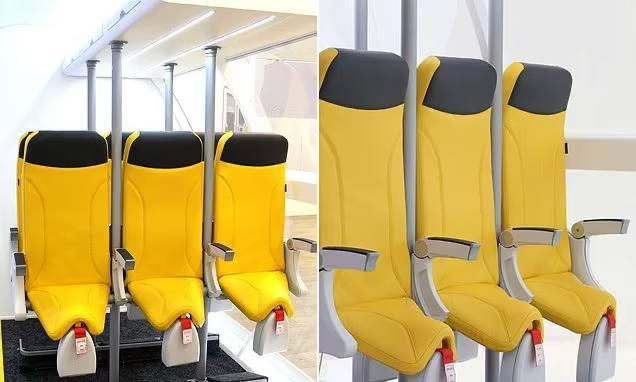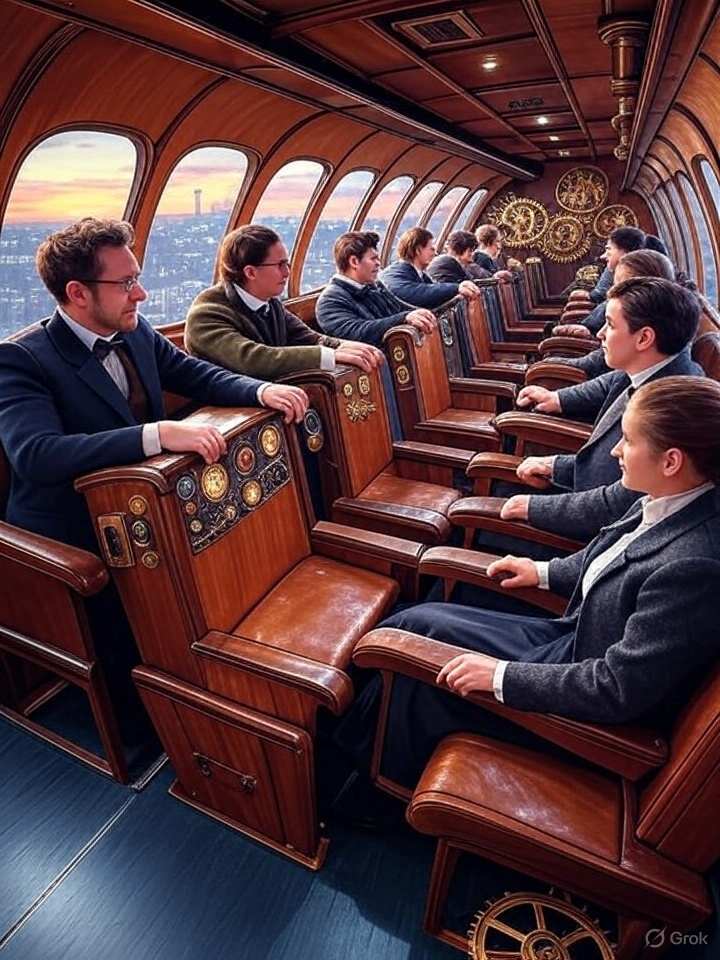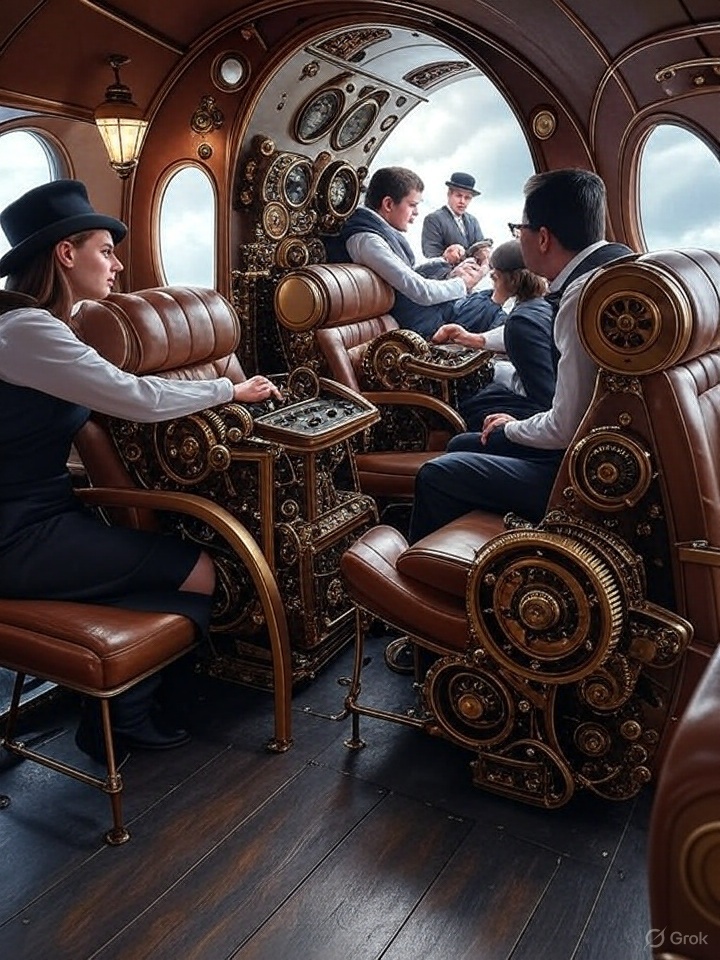Budget airlines are gearing up to revolutionize air travel with the introduction of standing seats, specifically the Skyrider 2.0, a saddle-like perch designed by Italian manufacturer Aviointeriors.
 Set to debut in 2026, these "seats" aim to boost cabin capacity by 20% while slashing maintenance costs, offering a new level of affordability for short-haul flights under two hours.
Set to debut in 2026, these "seats" aim to boost cabin capacity by 20% while slashing maintenance costs, offering a new level of affordability for short-haul flights under two hours.
Unlike traditional airplane seats, the Skyrider 2.0 doesn't allow passengers to fully sit. Instead, travelers lean at a 45-degree angle on a padded, bicycle-saddle-style perch, with their weight supported by their legs and core. The design, which connects to the cabin floor and ceiling via poles, drastically reduces seat pitch to just 23 inches — compared to the typical 30 inches in economy class.
 While this setup sacrifices comfort, it allows airlines to pack in more passengers, potentially lowering ticket prices to as little as €1–€5 for ultra-budget travelers. Additionally, the seats weigh 50% less than standard economy seats and have fewer components, cutting fuel and maintenance costs significantly.
While this setup sacrifices comfort, it allows airlines to pack in more passengers, potentially lowering ticket prices to as little as €1–€5 for ultra-budget travelers. Additionally, the seats weigh 50% less than standard economy seats and have fewer components, cutting fuel and maintenance costs significantly.
The concept, first unveiled in 2018 at the Aircraft Interiors Expo in Hamburg, has been marketed as a game-changer for low-cost carriers like Ryanair, whose CEO Michael O’Leary has long expressed interest in standing "berths" to maximize profits. However, the idea has sparked mixed reactions.
Also read:
- Binance Seeks Dismissal of FTX’s $1.76 Billion Lawsuit, Denies Role in Exchange’s Collapse
- For creators: Get 25k Quasacoin (QUA) for Free and Start Promoting Your Website
- Microsoft Bolsters Windows 11 with Quantum-Resistant Encryption to Secure the Future
 On social media platforms like X, many users have voiced skepticism and discomfort, with some calling it a "step too far" for budget travel, arguing that the lack of proper seating could turn flights into an endurance test. Others, however, see the appeal for quick, cheap trips across Europe, such as a hop from Madrid to Lisbon.
On social media platforms like X, many users have voiced skepticism and discomfort, with some calling it a "step too far" for budget travel, arguing that the lack of proper seating could turn flights into an endurance test. Others, however, see the appeal for quick, cheap trips across Europe, such as a hop from Madrid to Lisbon.
Despite the backlash, airlines are moving forward, emphasizing that the Skyrider 2.0 has passed rigorous safety tests, including rapid-exit drills, ensuring compliance with aviation regulations. The seats are equipped with seatbelts and fold-down trays, though they lack reclining features, in-flight entertainment, and under-seat storage.
For now, the standing option is intended for short flights only, with standard seats still available at a higher price for those prioritizing comfort.
As budget carriers race to offer the lowest fares, the Skyrider 2.0 could redefine air travel for cost-conscious passengers willing to trade convenience for savings. Whether this innovation takes off — or leaves travelers longing for the days of traditional seating—remains to be seen.






